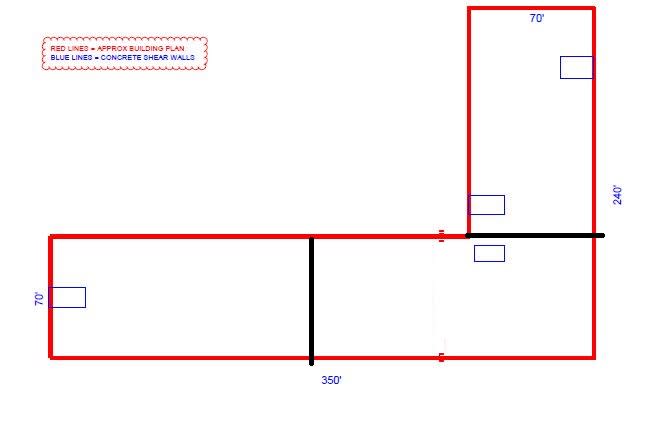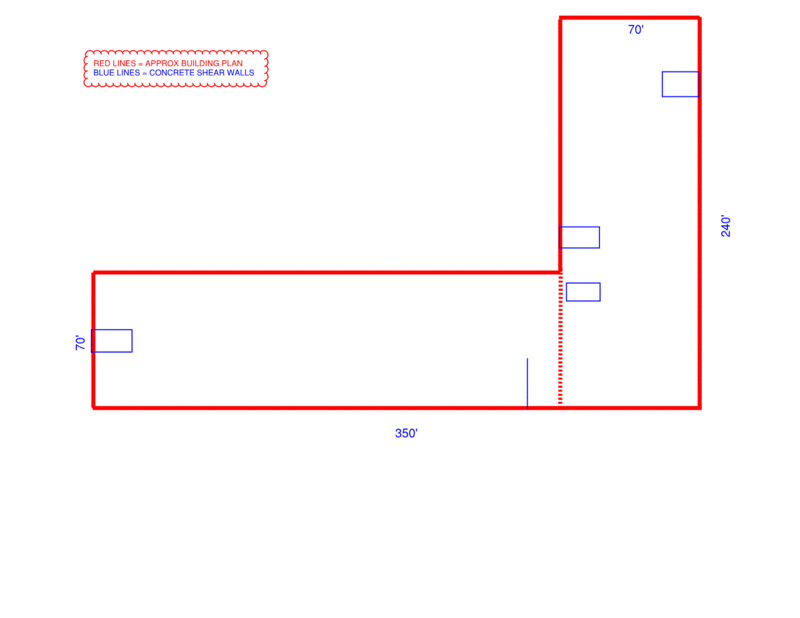mmodfr2013
Structural
- Feb 22, 2017
- 10
Hello,
I am looking for opinions on the need for an expansion joint in a building in the early design stages, there's a quick sketch attached. It is 7-stories, load bearing cold formed stud walls supporting concrete on metal deck with composite joists. Ordinary concrete shear walls are located around stair and elevators cores, with a single striaght wall located as shown on the sketch. Seismic Design Category is B.
My intuition tells me me to put an expansion joint roughly at the elbow and make two rectangles. AISC Fig 2-6 put me right on the line of needing a joint for 'other materials' but that table was developed for beam-and-column construction, and I have metal stud walls. The Architect is asking if one is really needed, and I have been looking for any other resources/etc that had more solid recommendations for this construction type.
I am looking for opinions on the need for an expansion joint in a building in the early design stages, there's a quick sketch attached. It is 7-stories, load bearing cold formed stud walls supporting concrete on metal deck with composite joists. Ordinary concrete shear walls are located around stair and elevators cores, with a single striaght wall located as shown on the sketch. Seismic Design Category is B.
My intuition tells me me to put an expansion joint roughly at the elbow and make two rectangles. AISC Fig 2-6 put me right on the line of needing a joint for 'other materials' but that table was developed for beam-and-column construction, and I have metal stud walls. The Architect is asking if one is really needed, and I have been looking for any other resources/etc that had more solid recommendations for this construction type.



